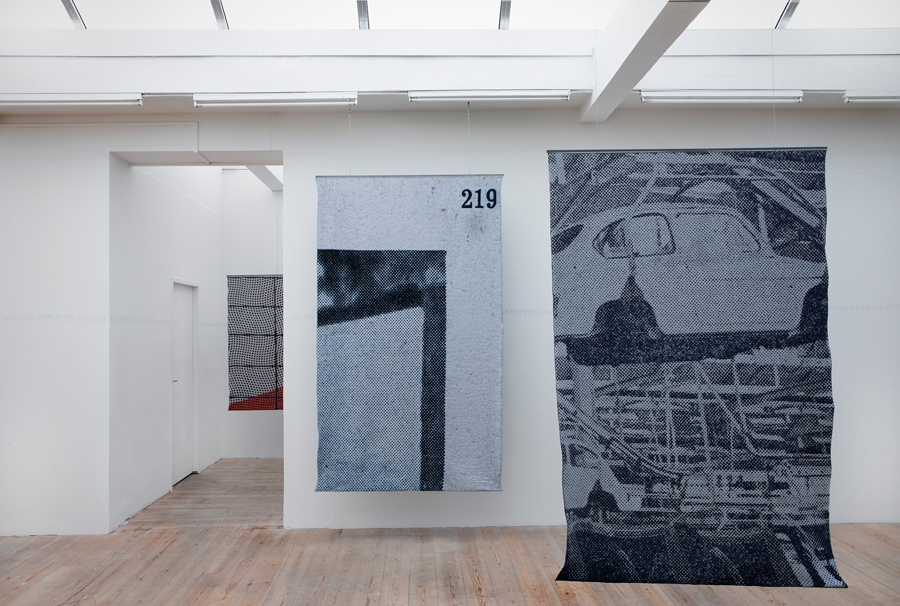Never before now have we bombarded each other with so many messages – whether by email or SMS – and immortalised ourselves with such a profligacy of digital images. At the same time, the archiving of this data has become deeply ephemeral and intangible, the majority of it condemned to disappear forever or become obsolete due to changing technologies, in which new models replace previous ones. These could themselves be used as a record or memory of a certain time. But how can one do that in a more lasting way? This is the question addressed by This Is the Time. This Is the Record of the Time – the title’s words drawn from the lyrics of Laurie Anderson’s From the Air (1982) – which features nine artists based in Amsterdam or Lebanon. The exhibition is part of SMBA’s Global Collaborations programme (afterwards travelling to the American University of Beirut Art Gallery), and Lebanon, with its troubled history, its layers of civil wars and conflicts, was probably not chosen by chance. With What Job’s Wife Said (2014), Walid Sadek refers to this palimpsestic history in a somewhat simple way, presenting an X-ray of a generic painting in order, ostensibly, to reactivate the past.
Kristina Benjocki also refers to the loaded history of her native Serbia, but does so via carpets, a popular means of storytelling and capturing historic events in her culture. In Study of Focus (2014) she transfers text fragments and pictures from Yugoslavian history books, uniting two forms of chronicling. The carpets also include ‘pixels’ replicating the printing of the books, as well as coffee stains on the pages: more traces of time. For Waiting for a Manifestation: One Week (2014), Rayyane Tabet measures time in a way even older than carpet-making – with tally marks. During a week he drew as many marks as possible, sometimes covering an entire wall, elsewhere a long horizontal line throughout the space, even continuing into the toilets. A comparable linear movement can be discerned in Sebastián Díaz Morales’s video Pasajes IV (2014), wherein a woman walks through rough landscape in Patagonia. Traversing deserted paths accompanied only by sheep, she hikes through an industrial site dotted with pylons, back to old ruined houses: from past to present and back, as in a long travelling shot throughout time and space.
Esmé Valk, too, captures the past via video. In her beautiful What Belongs to the Present (2013), she films, in black and white, a dancer performing an Ausdruckstanz, a German expressionist dance that was characteristic of the zeitgeist almost a century ago. Valk brings this dance – by its nature ephemeral – back to life by recording it for a contemporary and future audience. Still photography, however, traditionally the medium of freezing and immortalising the past, is strangely absent here, unless one considers work where it exists at a remove. For Tourists at the Distance (2014), Priscila Fernandes uses negatives of photographs that she pierces with a needle and paints over in vibrant colours before developing them – a kind of reenactment of pointillist painting in combination with photography – and Daniele Genadry does something similar by deploying a kind of neo-Impressionism by translating snapshots of landscapes in her paintings, rendered in vivid colours with an artistic blur mimicking the overexposure of the original picture. Both works are rather uninspiring and less relevant to the show’s theme, and express more or less the same idea. One of them could have easily been left out.
This is a minor flaw, however, in a show that is simultaneously coherent, varied, intelligent and poetic. The variety of media is not used for the sake of it, but is articulated as a considered way of engendering an understanding of different manners of recording time by tackling the subject from as many angles as possible. And, not unimportantly, to do so in more lasting ways than on iCloud.
This article was first published in the December 2014 issue.
